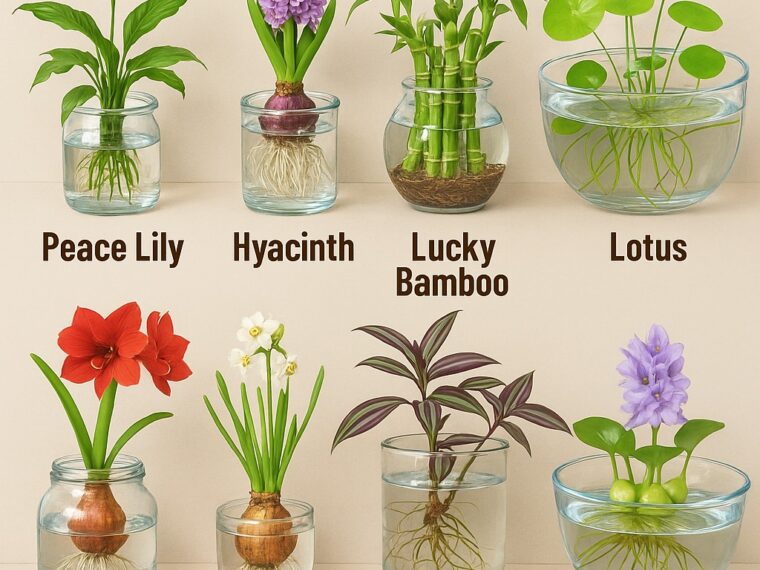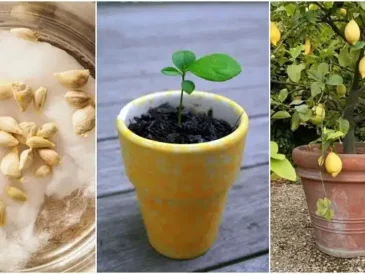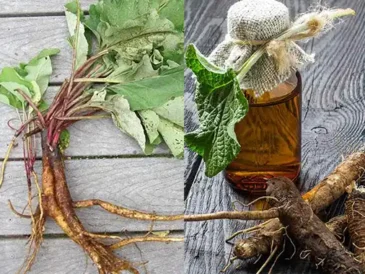Everybody knows that plants require three essential elements for their survival: light, water, and soil. However, you can say goodbye to the hassle of soil with the common method of growing houseplants in water. Various types of plants, like English ivy, pothos, and paperwhites, can thrive hydroponically and sustain this lifestyle throughout their entire natural lifespan without the need for soil. Now, let’s take a look at the best indoor plants that can grow in water and discover how to take care of them.
#1. African Violet

Known for its vibrant and velvety blooms, the African violet is a charming houseplant that can adapt to growing in water. To grow African Violets in water, take a healthy leaf cutting and suspend it in a container with water, making sure the stem is submerged. Change the water regularly to keep it fresh and place the container in a bright, indirect light location.

African violets appreciate consistently moist conditions, so top up the water when necessary, and enjoy the year-round beauty of these colorful blooms.
#2. Baby’s Tears

Delicate and cascading, baby’s tears are a perfect candidate for water propagation. Simply snip a few stems, remove any leaves along the lower portion, and place them in a container with water. Plus, ensure that you remove the nodes where the leaves are submerged.
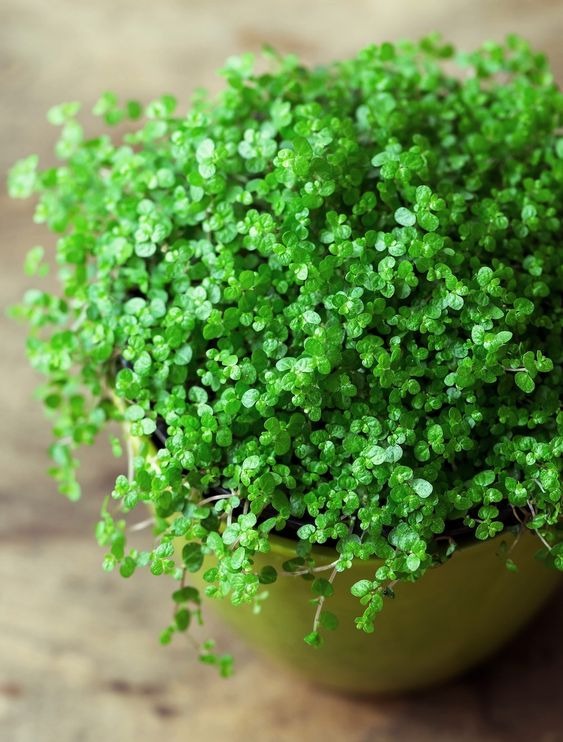
Baby’s tears thrive in consistently moist conditions. So remember to check the water level regularly and this low-maintenance beauty will reward you with a lush and trailing display.
#3. Begonia

Bring the vibrant hues of begonias into your home by growing them in water. Take a healthy leaf cutting and place it in a container with water, ensuring that the stem is immersed. Position the container in a bright spot with indirect sunlight.
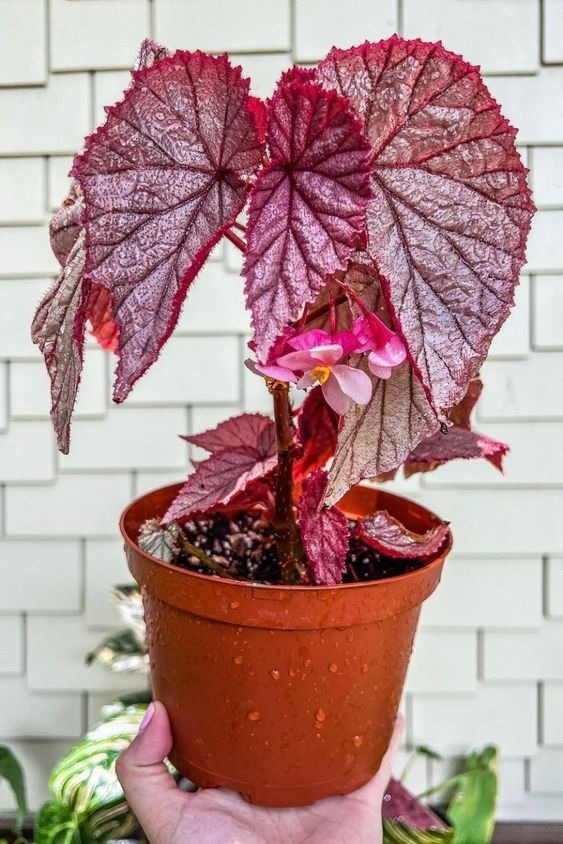
Begonias prefer consistently moist conditions, so monitor the water level and top up as necessary. With their unique foliage and easygoing nature, they add a burst of color to your indoor garden.
#4. Coleus
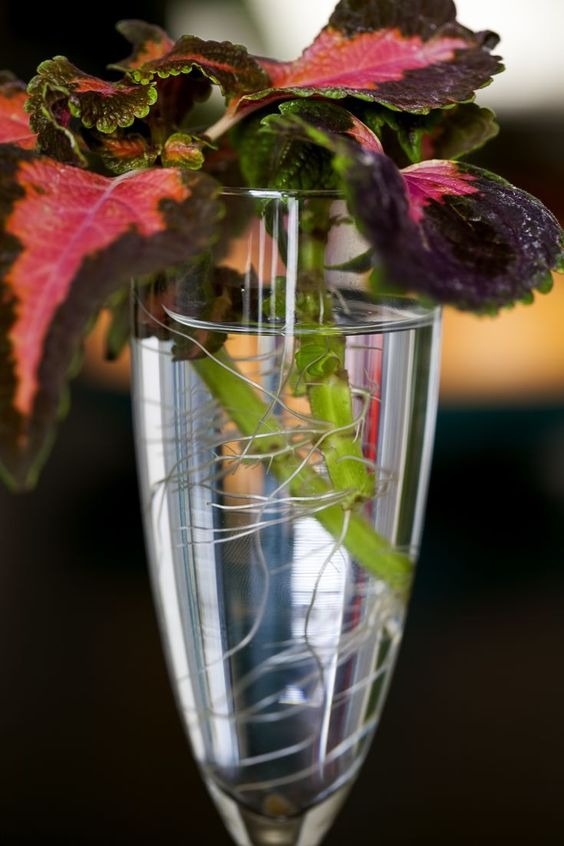
Coleus is one of the most colorful indoor plants that can grow in water. Take a cutting with a few inches of stem and place it in a container with water. Position the container in bright, indirect light for optimal growth. Change the water regularly to prevent bacterial growth.

Your coleus plants will flourish if you add a small amount of compost tea to the water when you change it once a month.
#5. Impatiens
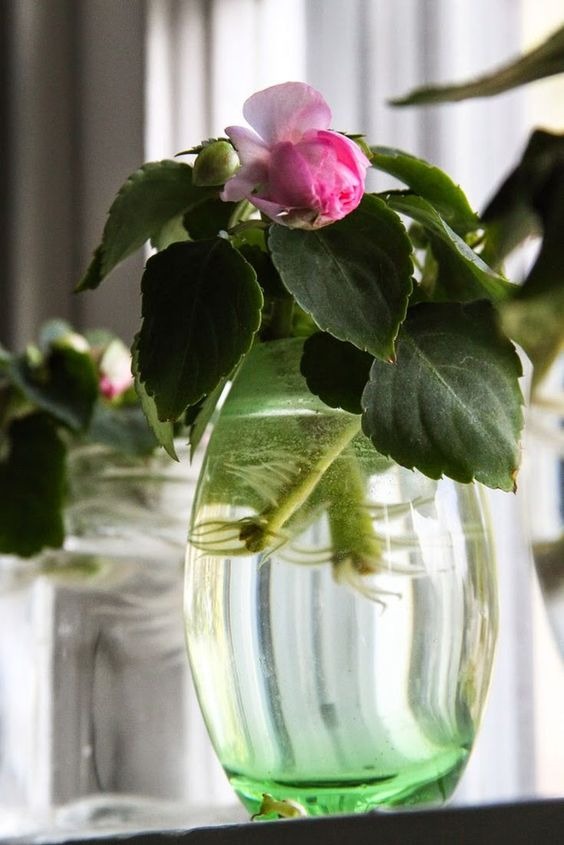
With their colorful blooms and shade-loving nature, impatiens can thrive in water. They love the water so much that they can grow as marginal pond plants.
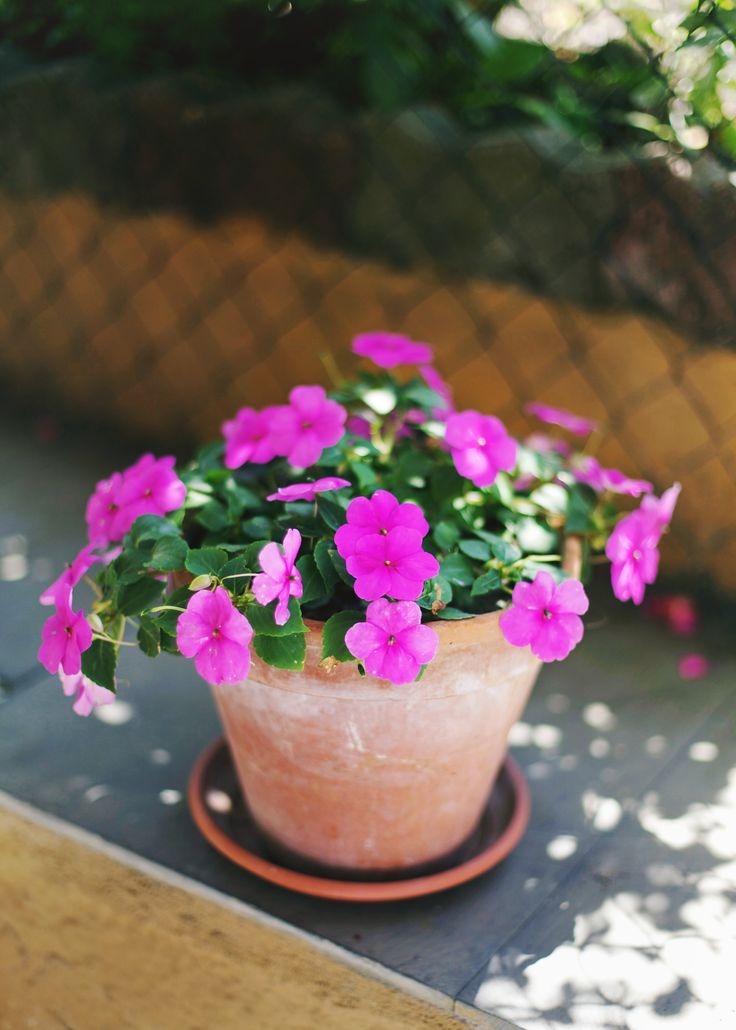
At the end of the growing season, trim off a few stems and store them in a vase for the winter. That’s the place they will root and grow into clones of the parent plant. In the spring, you’ll have an abundance of free impatiens to plant in your shade garden.
#6. Lucky Bamboo
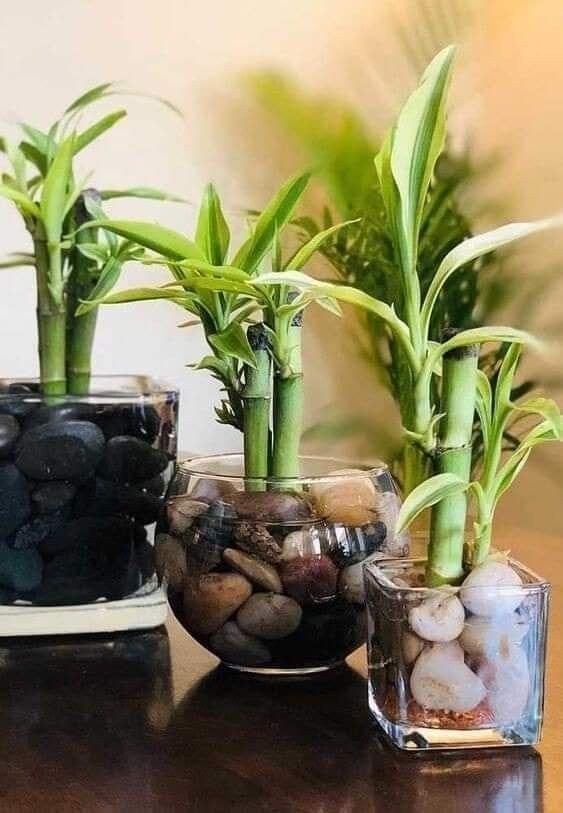
Lucky bamboo is not just a symbol of good fortune, it’s also an easy-to-grow plant in water. Place the bamboo stalks in a vase or container filled with water, ensuring that the roots are submerged.
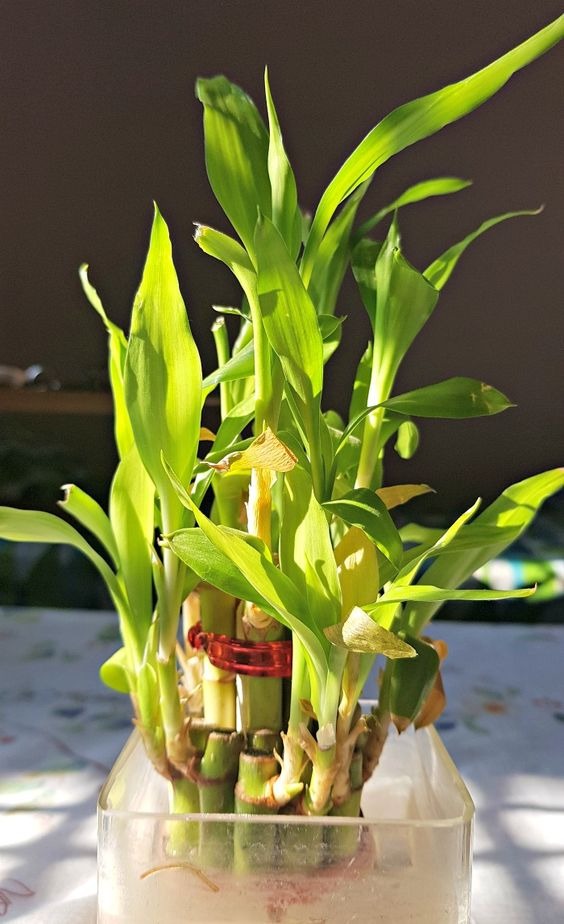
Lucky bamboo prefers bright, indirect light but can tolerate lower light conditions. Plus, you should change the water every two weeks to prevent stagnation and maintain its clarity.
#7. Philodendron
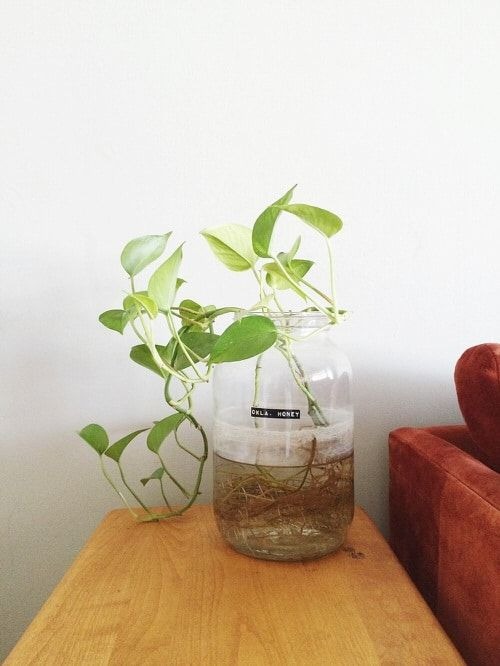
Known for its lush, trailing vines and heart-shaped leaves, the philodendron is a resilient houseplant that can thrive in water. Once it’s well-established, philodendron will gladly contribute a few of its stems to water gardening.

Although philodendron plants can tolerate a wide range of sunlight conditions, brighter lighting will encourage the growth of more leaves if your plants appear to be growing more stems than leaves.
#8. Spiderwort

Like no other low-maintenance plant, spiderwort plants, also known as inch plants, bridge a color gap in the collection of houseplants. Both the purple-leafed cultivar and the zebra-striped variety are suitable to grow indoors and create a striking focal point in spaces with moderate lighting.
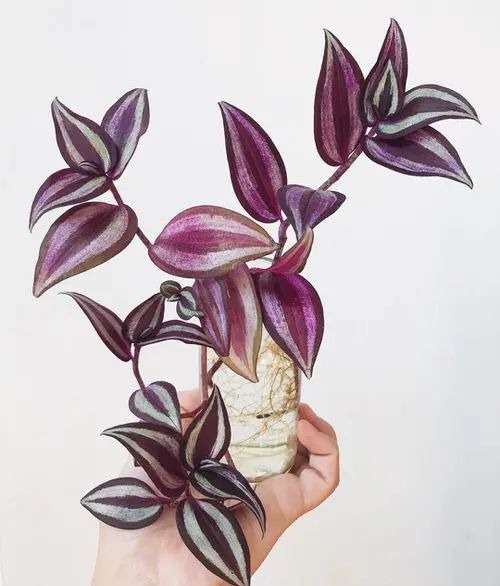
If you examine spiderwort closely, you can see nubs of root waiting to grow at the leaf nodes along the stem. You will have spiderwort babies by adding some stems to a mason jar or vase of water.
#9. Pothos
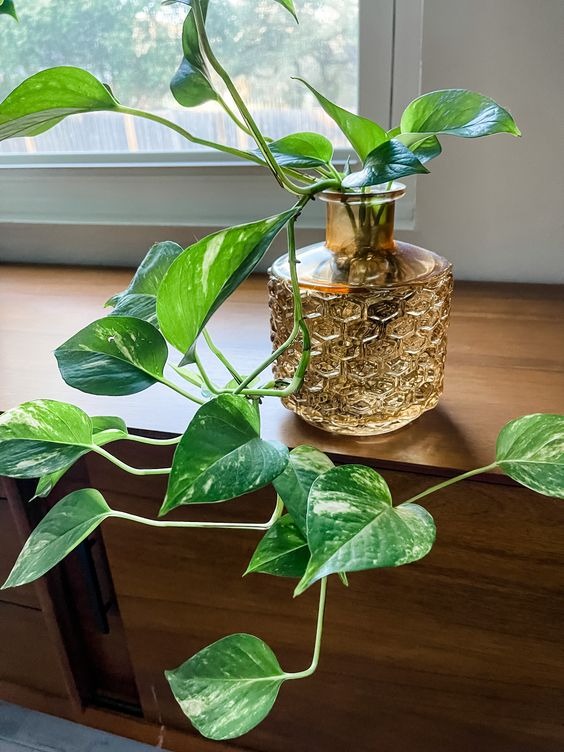
Known for its trailing vines and heart-shaped leaves, pothos is a popular choice for water propagation. Its leaves have striations of white, yellow, or light green color.
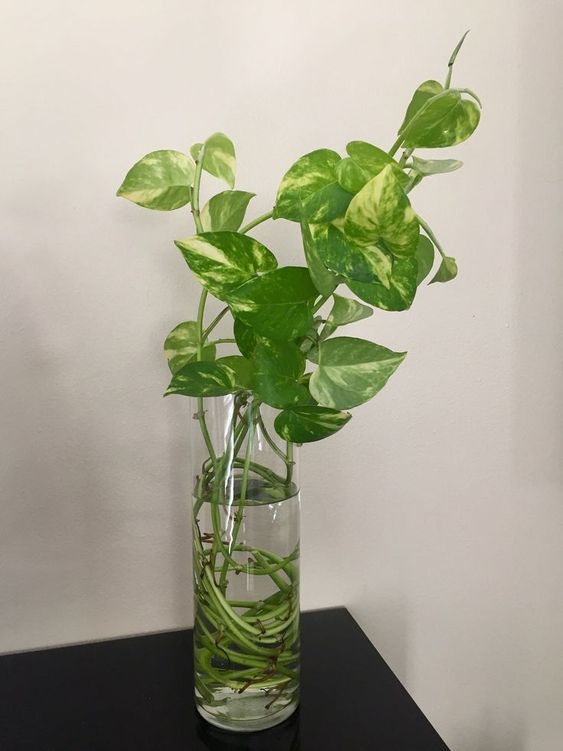
Cut a pothos vine segment that has three or four nodes. Any leaves left under the water will rot, so remove the leaves on the lower portion of the vine.Lucky bamboo is not just a symbol of good fortune, it’s also an easy-to-grow plant in water. Place the bamboo stalks in a vase or container filled with water, ensuring that the roots are submerged.

Lucky bamboo prefers bright, indirect light but can tolerate lower light conditions. Plus, you should change the water every two weeks to prevent stagnation and maintain its clarity.
#7. Philodendron

Known for its lush, trailing vines and heart-shaped leaves, the philodendron is a resilient houseplant that can thrive in water. Once it’s well-established, philodendron will gladly contribute a few of its stems to water gardening.

Although philodendron plants can tolerate a wide range of sunlight conditions, brighter lighting will encourage the growth of more leaves if your plants appear to be growing more stems than leaves.
#8. Spiderwort

Like no other low-maintenance plant, spiderwort plants, also known as inch plants, bridge a color gap in the collection of houseplants. Both the purple-leafed cultivar and the zebra-striped variety are suitable to grow indoors and create a striking focal point in spaces with moderate lighting.

If you examine spiderwort closely, you can see nubs of root waiting to grow at the leaf nodes along the stem. You will have spiderwort babies by adding some stems to a mason jar or vase of water.
#9. Pothos

Known for its trailing vines and heart-shaped leaves, pothos is a popular choice for water propagation. Its leaves have striations of white, yellow, or light green color.

Cut a pothos vine segment that has three or four nodes. Any leaves left under the water will rot, so remove the leaves on the lower portion of the vine.
#10. Chinese Evergreen
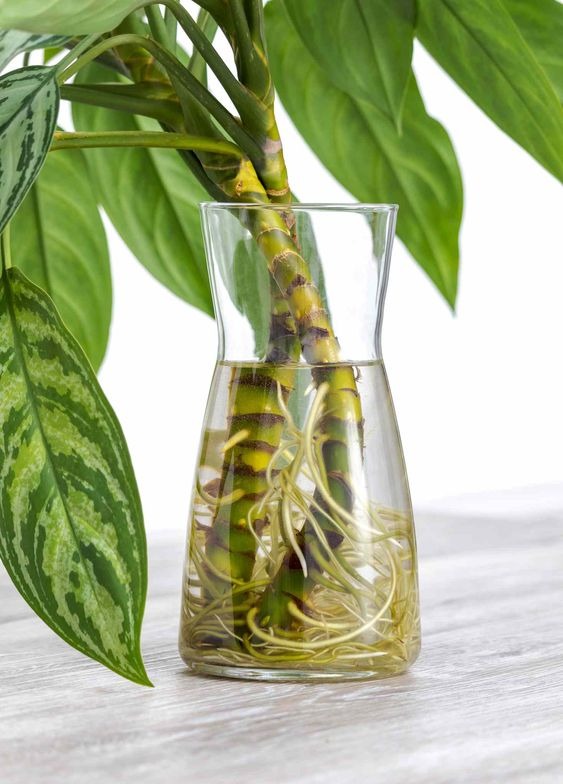
The Chinese evergreen, with its attractive variegated leaves, is a hardy houseplant that can add a touch of elegance to your indoor water garden.

It should take three to four weeks for the roots of Chinese evergreen to show. To promote growth, you can give the plant a few drops of liquid fertilizer that dissolves in water once a month.
TO CONTUNUE READING THE ARTICL PLEASE SEE PAGE 2 .
